
 Flash News
Flash News
Hostage taking in Tirana, 40-year-old man forcibly taken into car
Car catches fire in Tirana
SPAK announces the claim for "Sterilization", seeks 10-year sentences for Klodian Rjepaj and Ilir Rrapaj
Gunfight at the Institute, 7 people involved, one of them arrested
Trial for Martin Can's murder postponed, Përlleshaj does not appear at the hearing
Vodafone Albania becomes the first operator to use space technology for an even stronger signal
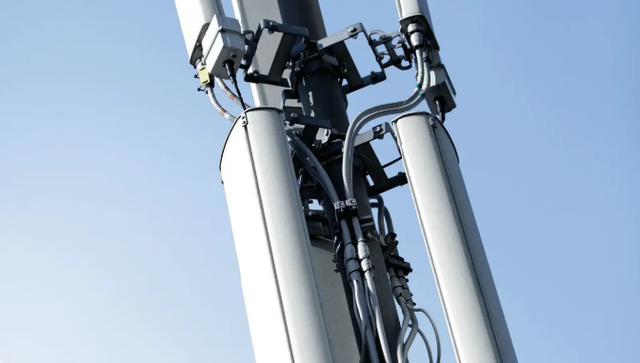
Vodafone is turning to space technology to solve a terrestrial challenge – how to ensure that 4G and 5G antennas placed on the ground are always positioned accurately, to guarantee the best signal for users.
Vodafone's solution to this challenge will be implemented initially in Albania, starting in September, before being extended to other countries. It consists of installing satellite-guided sensors inside new antennas placed on top of mobile phone masts. With this innovation, Vodafone becomes the first operator to use such technology in a commercial network, ensuring that the antennas are oriented correctly from the start and remain so afterwards.
If mobile antennas are not perfectly oriented, for example, if they have shifted over time due to adverse weather conditions or seismic activity, the connection quality can deteriorate significantly.
Satellite-guided sensors
Currently, antenna installation is done manually, and while engineers have the ability to position them optimally, it is not a simple process. At heights of up to 50 meters, they must consider azimuth (the angle of orientation to true north), slope to determine the distance and area covered by the signal, and height above sea level to avoid obstacles that could affect the antenna's performance. The challenges are further increased when antennas from different operators are placed on the same mast.
To address these challenges, Vodafone is integrating special sensors within the antennas themselves. These sensors will collect GPS-based information from modules placed at various points on the antenna, along with other performance data. The data is then instantly transmitted to one of Vodafone’s network operations centers, enabling engineers to reposition the antenna automatically or send an expert to the field for more complex installations.
Accuracy on the network is essential
Alberto Ripepi, Network Director at Vodafone, said: “As smartphones become increasingly functional, network accuracy also becomes vital. The correct orientation of antennas is now one of the most critical elements in the installation and maintenance of high-performance mobile networks. By integrating sensors into the new antennas, we can more easily calibrate them to deliver the best signal quality to our customers.”
During installation, each antenna must be oriented to cover the specific target area, while minimizing interference with neighboring cells. Accurate positioning of the antennas helps eliminate dead zones, increases data speeds, improves connection responsiveness, and reduces the number of dropped calls. This innovative approach will reduce the need for multiple field interventions for adjustments, significantly reducing maintenance costs over time.
Vodafone is working closely with its network suppliers to ensure that the information collected by the sensors is easy to process and consistent across the entire pan-European network, through a standardised industry protocol. In the future, Vodafone's aim is to dynamically control the position of the antennas in line with real-time demands – whether to serve commuters in their daily lives, fans in stadiums or attendees at music festivals.
Network as a sensor
This latest technological innovation is part of a broader program called “Network as Sensor”, which leverages Vodafone’s extensive geographical reach of around 160,000 masts across Europe and Africa. In this context, Vodafone is using sensors placed on its masts to predict rainfall and other atmospheric conditions at the micro-climate level, enabling timely notification of citizens and emergency teams to floods or other natural and man-made hazards.
Latest news



Kremlin: US and Iran disagree on damage caused by attacks
2025-06-25 16:13:55
11 maji/ KQZ vulos rezultatin, u jep mandatin deputetëve për 4 qarqe të vendit
2025-06-25 16:00:32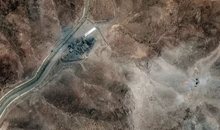
Iran: Nuclear facilities suffered severe damage from US airstrike
2025-06-25 15:49:38
Hostage taking in Tirana, 40-year-old man forcibly taken into car
2025-06-25 15:35:51
Kosovo/ The constitution of the Assembly fails for the 37th time
2025-06-25 15:24:28
Car catches fire in Tirana
2025-06-25 15:06:53
5 super healthy foods you should add to your diet
2025-06-25 14:57:48
TikTok returns to Albania, one-year ban quietly lifted after three months
2025-06-25 14:49:14


Gunfight at the Institute, 7 people involved, one of them arrested
2025-06-25 14:21:10
Convict dies in Lezha prison
2025-06-25 14:08:16

ACE Closes Filma24, the Movie Piracy Giant in Albania
2025-06-25 13:44:37

SPAK postpones the investigation against Ahmetaj for the fourth time
2025-06-25 13:12:42

Communication services in Albania cost more than the EU average
2025-06-25 12:55:50
How to choose the right perfume scent according to your personality
2025-06-25 12:44:36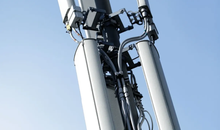





Today is the 37th attempt to constitute the Assembly.
2025-06-25 11:34:23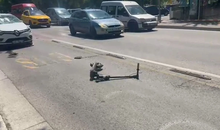
Accident in Tirana, taxi hits two children with a wheelchair
2025-06-25 11:19:05
Some reasons why gossip isn't as toxic as you think
2025-06-25 11:07:51

Selling dope in nightclubs, 33-year-old arrested in Tirana
2025-06-25 10:45:25
The Supreme Court rejects the appeal of Jamarbër Malltez
2025-06-25 10:26:58
The warned cyberattack on Tirana Municipality brings back security concerns
2025-06-25 10:19:43
Iranian parliament votes to suspend cooperation with UN nuclear watchdog
2025-06-25 10:03:02
Bosnian fraudster arrested, wanted in Germany
2025-06-25 09:53:10
May 11/ Nuri: The vote 'died' before it was cast in the box
2025-06-25 09:42:02
Men with big bellies are at risk of suffering from this problem
2025-06-25 09:37:26

Today, around 28,000 9th grade students are taking the math exam.
2025-06-25 09:19:14
NATO arms itself against potential threats from Russia
2025-06-25 09:03:09
Tourists don't come, Albanians leave!
2025-06-25 08:59:08
TNT explosion in Vlora
2025-06-25 08:38:41
Tourism/ Kosovo "flees" after visa waiver, Poles and Spaniards "get upset"
2025-06-25 08:22:43
Horoscope, what do the stars have in store for you today?
2025-06-25 08:09:54
Ditë me diell, parashikimi i motit, si do të ndryshojnë temperaturat
2025-06-25 07:59:33
Morning Post/ In 2 lines: What mattered yesterday in Albania
2025-06-25 07:45:27



Earthquake tremors felt again in Tirana
2025-06-24 22:11:53


US intelligence: Attacks on Iran did not destroy nuclear plants
2025-06-24 21:30:31
Accident on the Fier-Cekan axis, 3 injured
2025-06-24 21:16:32



Cancer season, what is expected to happen for each zodiac sign
2025-06-24 20:15:54


After ceasefire, Iranian airspace partially reopens to international flights
2025-06-24 19:47:10
Oil prices fall after Israel-Iran ceasefire reached
2025-06-24 19:26:52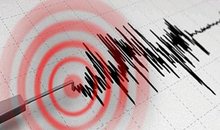


Will Iran participate in the 2026 World Cup being held in the USA?
2025-06-24 18:46:36


BIRN: Veliaj hires British law firm for defense! Huge sum revealed
2025-06-24 18:20:16




Accident on "Durrës Road" in Tirana, 3 cars collide
2025-06-24 16:52:05

GJKKO sentences Dritan Lleshi to 8 months in prison for unlawful influence
2025-06-24 16:29:29
Former head of the DP branch in Vlora elected head of the Cadastre
2025-06-24 16:19:22

What does facial yoga offer and why is it considered an elixir of youth?
2025-06-24 16:07:40

"Temperatures will reach 40°C"/ AKMC appeals to citizens: Be careful!
2025-06-24 15:36:18


Second outbreak of plague in Korça, over 190 heads of cattle destroyed
2025-06-24 14:57:32
How often should you reapply sunscreen?
2025-06-24 14:44:29
Hitting OSHEE employee, 38-year-old arrested in Tirana
2025-06-24 14:34:37
Albania less competitive in 2024, export businesses fall
2025-06-24 14:20:32

Partial local elections, Berisha: With Edi Rama there are only farces
2025-06-24 14:03:50
Ceasefire Violation, Trump Warns Iran and Israel: Do Not Attack
2025-06-24 13:47:21
Berisha: Fox News slammed Edi Rama as Europe's Ramaduro
2025-06-24 13:38:03
What happened to him? Louis Ailey ends up in the hospital
2025-06-24 13:29:24

Accident in Divjaka, 15-year-old dies while riding a motorcycle
2025-06-24 13:09:38

SPAK takes the head of the Procurement Commission as a defendant
2025-06-24 12:55:21

Rutte: US is fully committed to NATO
2025-06-24 12:39:49

SPAK gives the claim for "Metamorphosis", 13 years in prison for Dedan Gjoni
2025-06-24 12:16:29
